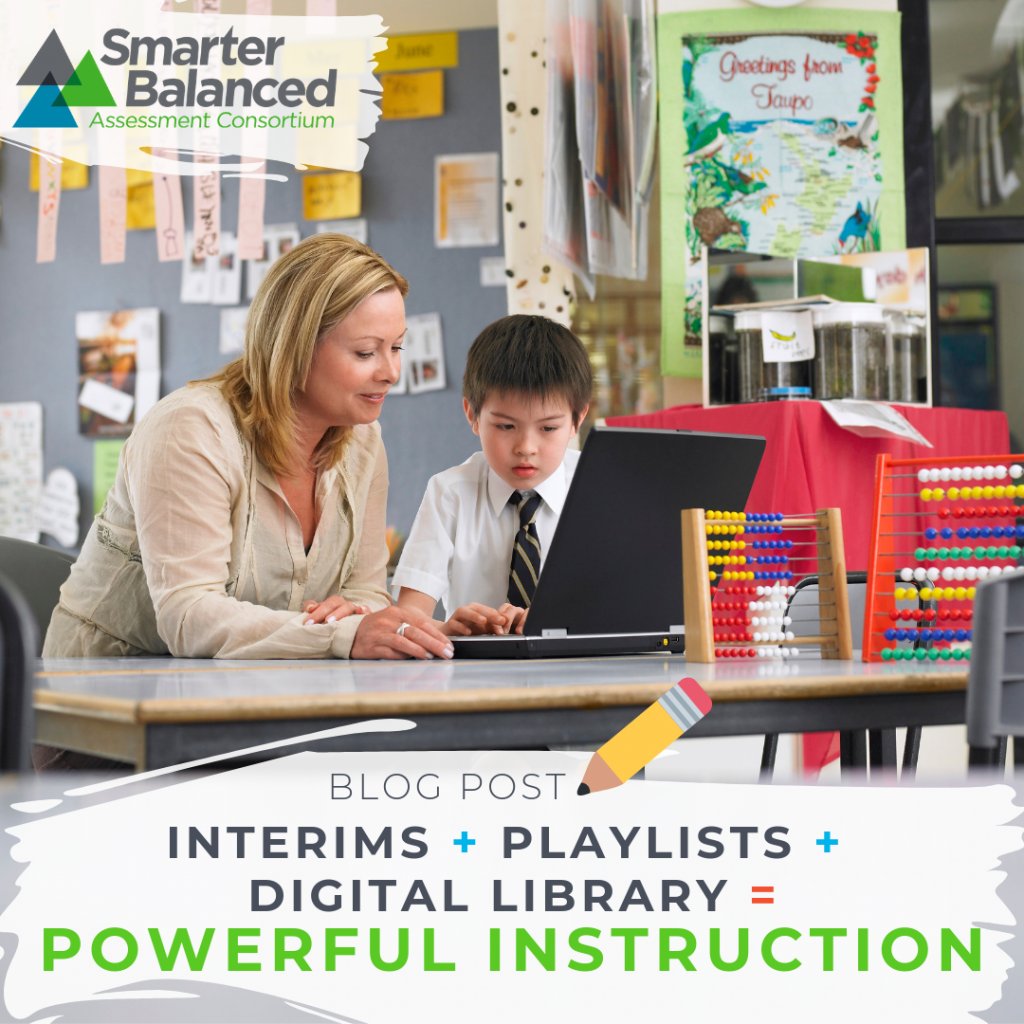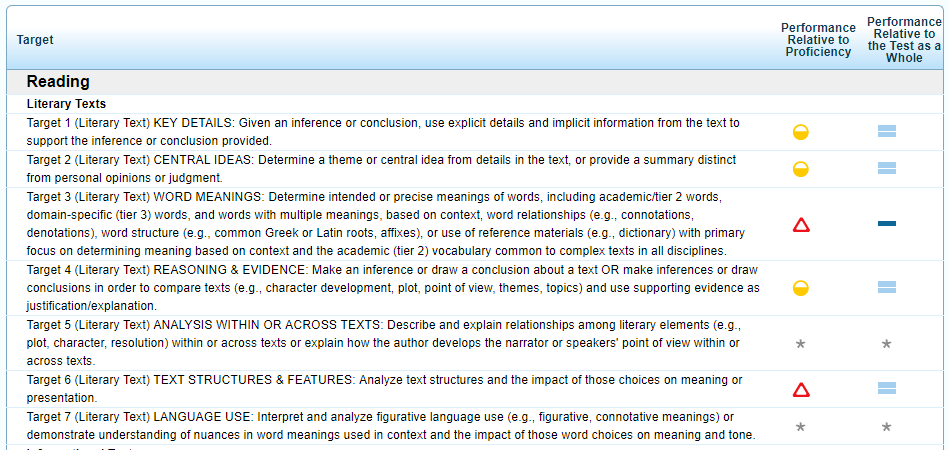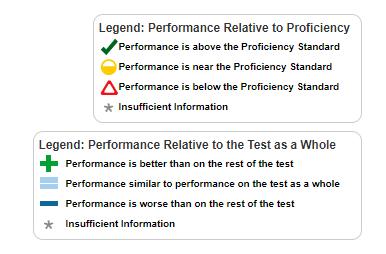Interims + Playlists + Digital Library = Powerful Instruction
NOTE: The Smarter Balanced Digital Library was decommissioned. Please visit Tools for Teachers, the new home for instructional resources and professional learning.
How to Use Assessment Data to Identify Gaps in Learning

Elizabeth Johnston, Guest Blogger
English Language Arts Teacher (7th Grade)
We are getting into testing season and everyone wants to make sure their kids have learned what they need to learn. A great way to check for gaps is to use assessment data from previous tests. Hopefully, you had the opportunity to give interims this year and you can use the data from those to determine next steps. If not, you can also use your students’ assessment data from last year’s test* to see where they may have some gaps in learning.
Smarter Balanced has made sure that teachers have input and a role in the development of the test questions, the playlists, and instructional resources. Because of this, there are many great lessons that have been used in other teachers’ classrooms to target students’ areas of need.
Assessment Data
Interims are the best way to get assessment data from your students in smaller, more manageable chunks. One of my favorite tools from the interims is the reporting system available in Washington State* that shows me the questions my students struggle with the most and the questions they can do the best.

Once you have this assessment data, the playlists that are available in the Digital Library will link you with resources that will touch on those areas of need.
Not only that, but this is a great opportunity to have teachable moments with your students. You and they can analyze why they struggled the most with the 5 lowest and brainstorm strategies to improve or tackle those types of questions. It is beneficial to notice patterns in the questions they struggle with. I like to have groups tackle the questions and offer rationale for why they think the right answer was right as well as why the wrong answers were not as good.
Another way to get assessment data is to look at how your students performed on the summative assessment. I like to look at areas where they struggled on this test, as well as the interims we have done throughout the year, to see what I may need to cover more thoroughly or add to my lessons during the year.


If available, looking at the Target data for your students will show performance ratings based on proficiency (passing the test), as well as the rating compared to how well your specific student group did on the assessment. This information is organized by the target strands and is a great source of information.
PLAYLISTS + Digital Library Lessons
Playlists are part of the Digital Library collection of instructional supports. There are professional development resources and lessons to support your instruction, while incorporating the formative assessment process in the classroom. If you have not explored the Digital Library, or have not explored it since early on, you should definitely go back. So much has been added and the ease of navigation is greatly improved.
Once in the Digital Library you look at the playlist for the claim area you are focusing on, the level your students are working at, and then the target(s) they struggle with. For example, my students this year struggled with literary text structure. I would go to 7th grade reading, below or at/near standard, and then specifically look at the resource(s) linked for text structure.

There are many lessons in the library. When I modified my Library search results to show Grade 7 ELA: Claim 1: Target 6, I ended up with 6 different resources. So in addition to using the resources on the Connections Playlists, you can use the search features in the Digital Library to identify instructional resources to support student learning gaps. Additionally, you may find that a resource gives you an idea of something else you want to develop to address your students’ specific learning needs.
As one of my education professors told me, you don’t need to recreate the wheel when many different ones have already been made. Use the time to make something perfect for your kids as opposed to starting from scratch. There are great resources available in the Digital Library to make your instruction even more powerful.
* NOTE: Member states may be using their own reporting systems and therefore software may look and function differently. My experience is based on Washington State’s testing and reporting system.
About our Guest Blogger

Elizabeth Johnston is a secondary certified, middle-level 7th grade teacher in Shelton, WA, a rural community with a diverse population. She has taught high school and middle school for over a decade. She has her M.Ed. and certifications in ELA, ELL, Drama, and Middle Level Humanities. After moving to the Northwest as a child, she cannot imagine living in a more beautiful place (but sometimes wishes for a little more sunshine).
Elizabeth Johnston can be found on Twitter at @ejohnstonteach
